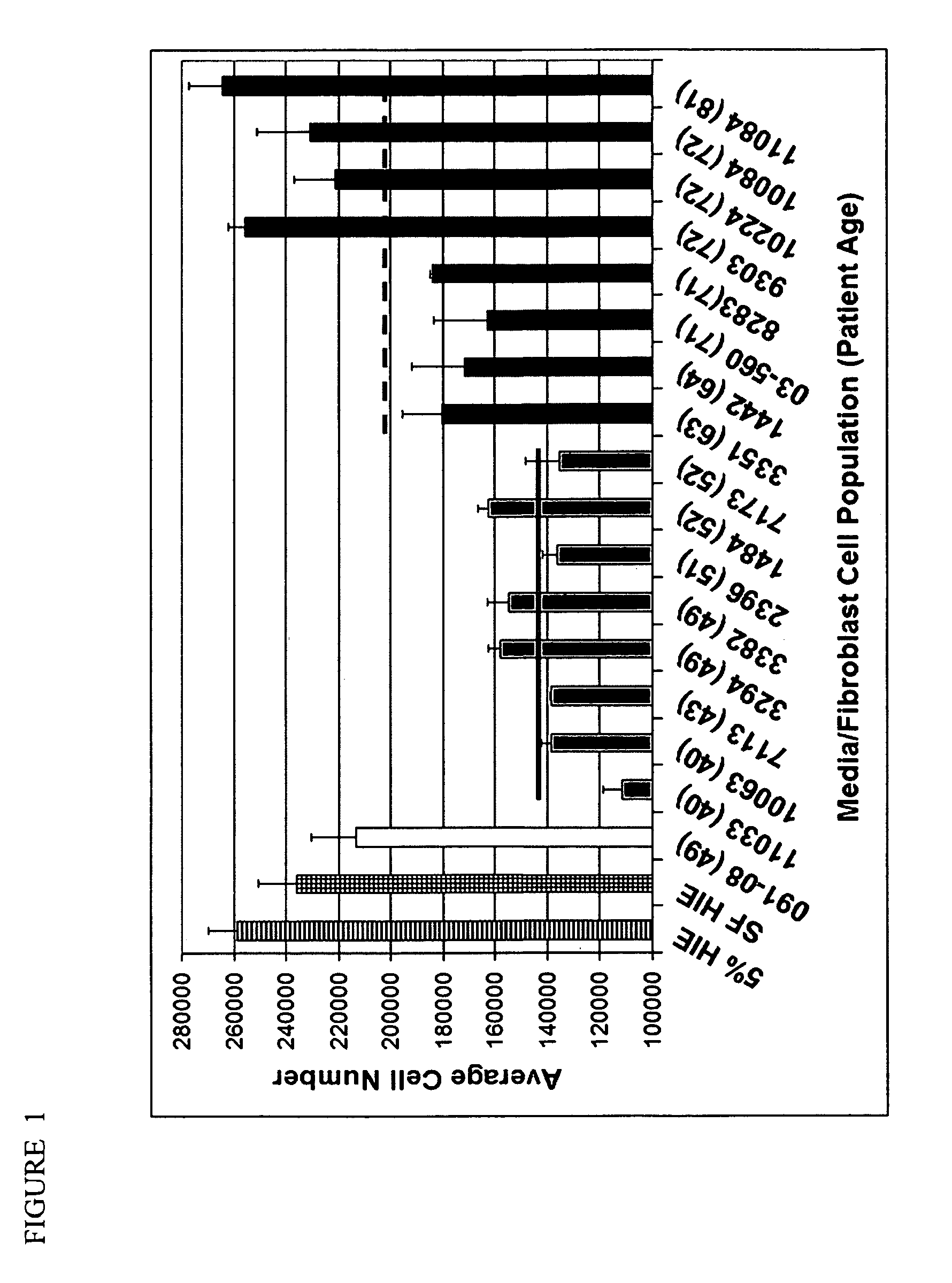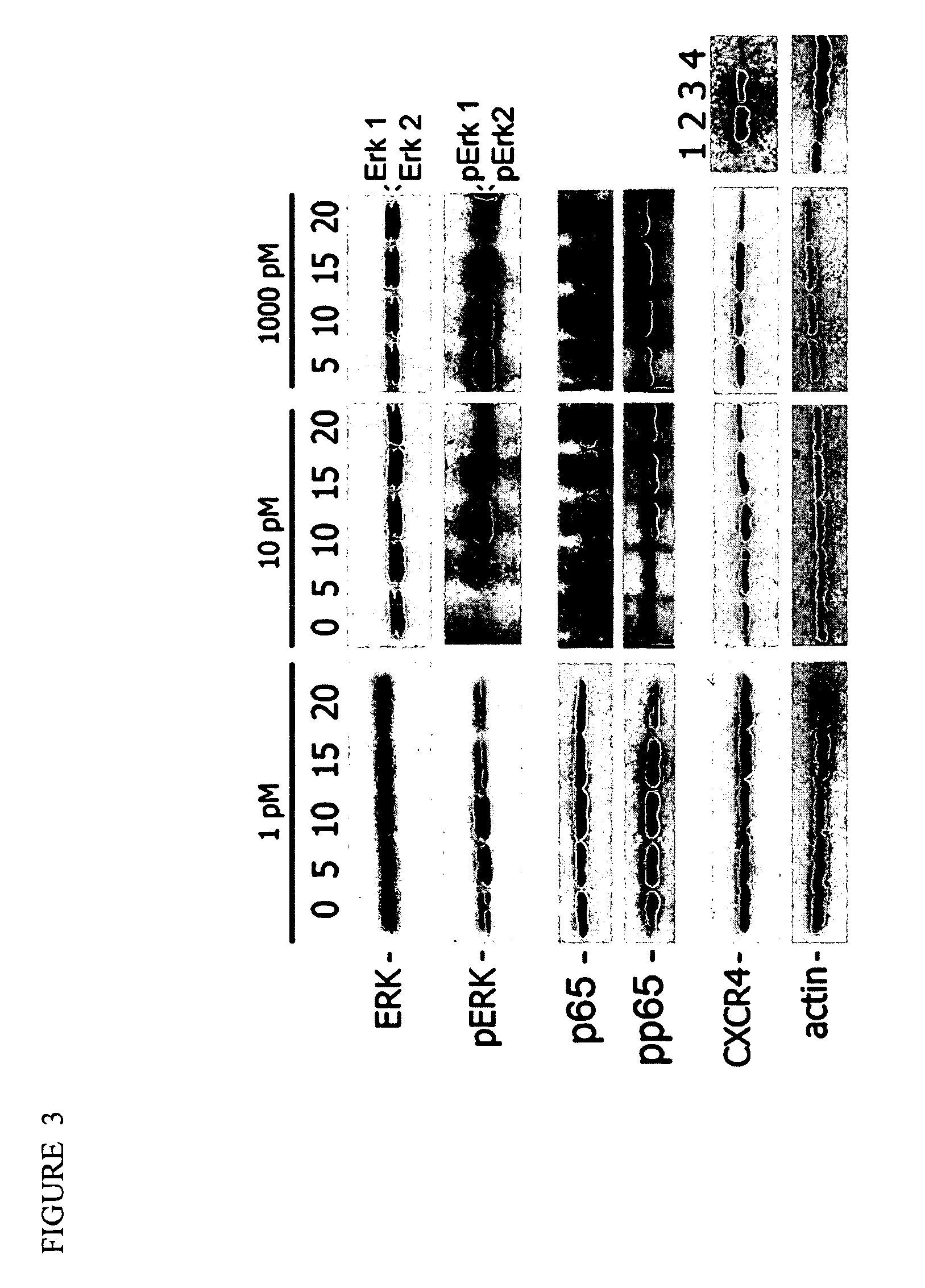Compositions and methods for detecting and treating prostate disorders
a prostate disorder and composition technology, applied in the field of cellular proliferation disorders and cellular motility disorders, can solve the problems of difficult treatment selection, erectile dysfunction and other symptoms, difficulty in urination, and high detection rate, and achieve the effects of improving detection rate and high detection ra
- Summary
- Abstract
- Description
- Claims
- Application Information
AI Technical Summary
Benefits of technology
Problems solved by technology
Method used
Image
Examples
example i
[0267]This example describes the materials and methods used for Examples II-VI.
[0268]Establishment of cell cultures. Normal prostate tissue samples were obtained aseptically from patients undergoing radical prostatectomy or cystoprostatectomy after cancer diagnosis. Tissue was taken exclusively from the transitional zone of the prostate surrounding the urethra to facilitate the isolation of fibroblasts associated with benign prostatic hypertrophy (BPH). A small slice of the tissue piece (25%) was fixed in 10% formalin for immunohistochemical examination. The remaining tissue was minced into pieces of −1 collagenase III (Worthington Biochemicals, Lakewood, N.J., USA) at 37° C. with gentle shaking, spun down, resuspended and plated in 5% HIE media [Ham's F12 (Mediatech Inc., Herndon, Va., USA) with 5% FBS (Invitrogen Life Technologies Inc., Carlsbad, Calif., USA), 5 μg mL−1 insulin, 10 ng mL−1 EGF, 1 μg mL−1 hydrocortisone (Sigma Chemical Co., St. Louis, Mo., USA). Subcultured fibrobl...
example ii
[0277]This example shows that older fibroblasts are less able to repress epithelial cell proliferation than younger fibroblasts in vitro. N15C6 human prostate epithelial cells demonstrated differential growth in conditioned media acquired from fibroblast cell populations originating from younger (40-52 years old) compared with older (63-72 years old) patients (FIG. 1). The average cell number for N15C6 cells grown in defined serum-free HIE conditioned media acquired from younger fibroblasts, 142 000 (±16 400) cells, was significantly less than that for the same cells grown in defined serum-free HIE media alone, 235 990 (±14 680) (P<0.001) (FIG. 1). This indicated that conditioned media from younger fibroblast cells exerted a growth-suppressive effect on N15C6 prostate epithelial cells. In contrast, the average cell number for N15C6 cells grown in the presence of defined serumfree HIE conditioned media acquired from older fibroblasts, 209 000 (±40 000) cells, was higher than that for...
example iii
[0279]This example shows how differential gene expression patterns distinguish older fibroblasts from younger prostate fibroblasts. The gene expression profiles of four fibroblast cell populations derived from younger patients, (40 years old), (40 years old), (51 years old) and (52 years old) and of two derived from older patients, 1442 (64 years old) and (71 years old), was obtained using Affymetrix U133A GeneChips and compared. These experiments identified 54 unique, differentially expressed, transcripts, with 41 / 54 (76%) up-regulated and 13 / 54 (24%) down-regulated in older compared with younger stromal fibroblasts. Twelve of the transcripts (e.g., representing nine unique sequences) that were up-regulated in RNA derived from older compared with younger prostate stromal fibroblasts encoded secreted proteins. The upregulated transcripts included transcripts for the genes encoding the following CXC-type cytokines: CXCL1, CXCL5, CXCL6, and CXCL12. Of these transcripts, the most highl...
PUM
| Property | Measurement | Unit |
|---|---|---|
| concentrations | aaaaa | aaaaa |
| size | aaaaa | aaaaa |
| molecular weight | aaaaa | aaaaa |
Abstract
Description
Claims
Application Information
 Login to View More
Login to View More - R&D
- Intellectual Property
- Life Sciences
- Materials
- Tech Scout
- Unparalleled Data Quality
- Higher Quality Content
- 60% Fewer Hallucinations
Browse by: Latest US Patents, China's latest patents, Technical Efficacy Thesaurus, Application Domain, Technology Topic, Popular Technical Reports.
© 2025 PatSnap. All rights reserved.Legal|Privacy policy|Modern Slavery Act Transparency Statement|Sitemap|About US| Contact US: help@patsnap.com



